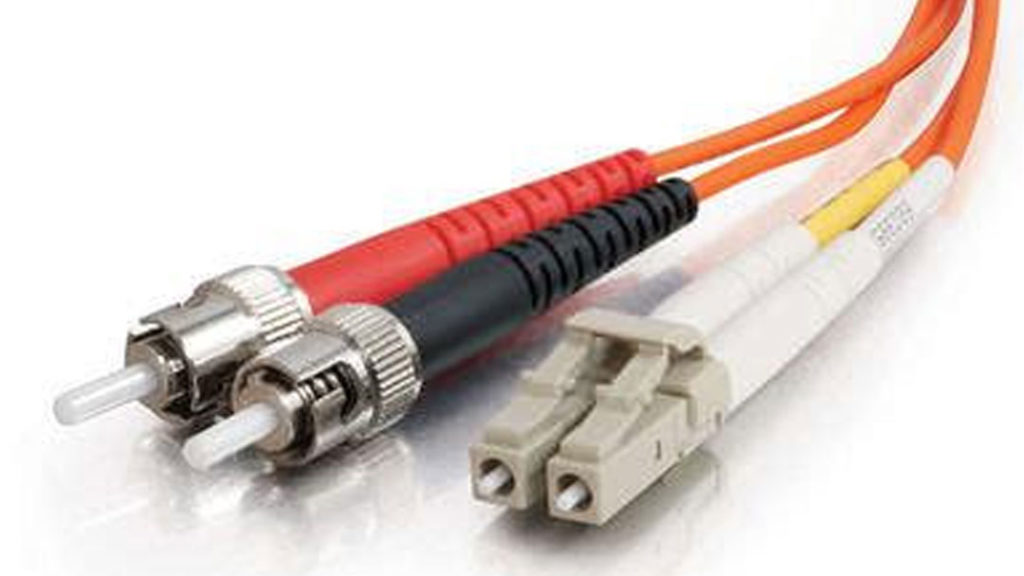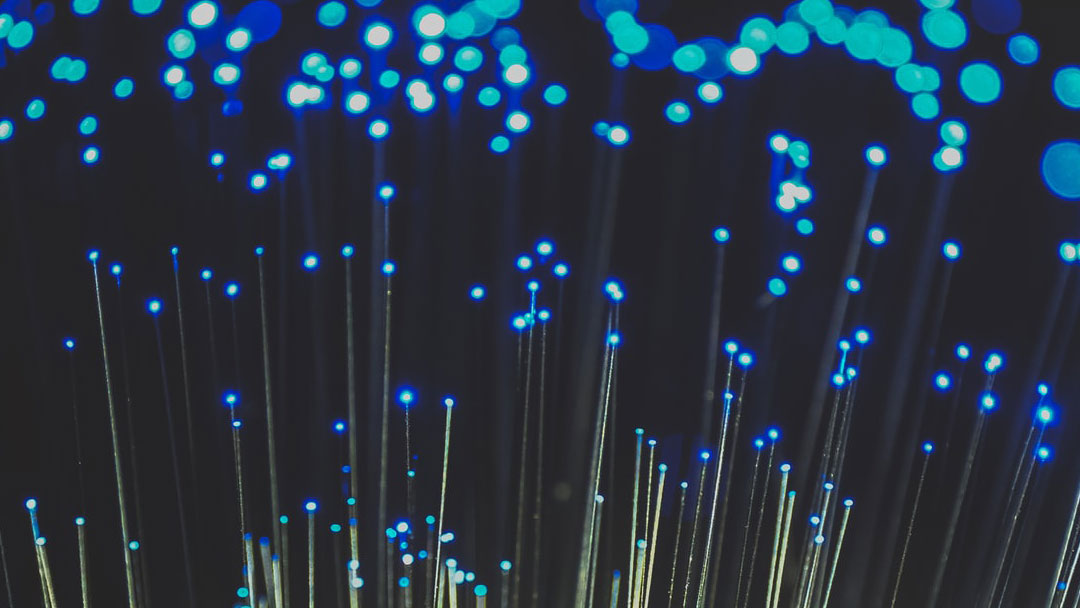The global fiber optic cable industry is expected to grow 14.5% by 2026 because of the increased demand for FTTX, telecommunications, and other technological advancements. And more and more businesses are upgrading their cabling to accommodate 5G capabilities.
But how do you determine the best fiber patch cord for your business? We’ll walk you through our step-by-step guide for determining your requirements to know how to select the best fiber patch cord for your applications and devices.

A Step-by-Step Guide to Choosing the Best Fiber Patch Cords
Step 1: Determine What Connector Type You Need
To determine what connector you will need, you need to examine the device ports you’ll be connecting, and you need to know what applications will utilize the cord. Fiber optic patch cords come with different connectors to plug into different devices. If the devices you are connecting have the same connector port, you’ll want to select a:
- LC-LC
- SC-SC
- MPO-MPO
For devices with different connector ports, you may want to select a:
- LC-SC
- LC-ST
- LC-FC
Applications for Different Connectors
How you’ll use the patch cable will also affect what connector to select. Here is a typical list of applications and the connector you’ll need to handle the load:
- 1.25 mm LC: XFP transceivers, SFP and SFP+ transceivers, Higher-density connections
- 2.5 mm SC: EPON, GPON, GBIC, X2 and XENPAK transceivers, telecom, and datacom
- 2.5 mm ST: Military, campuses, FTTH, datacom, and corporate networks
- 2.5 mm FC: Telecom, datacom, single-mode lasers, measurement equipment
- 2.5 x 6.4 mm MPO/MTP: 40G QSFP+, 100G QSFP28 transceivers, multi-fiber ribbon applications
Do you have questions about which connector is best for your application? Contact C&C Technology to learn more about which fiber optic patch cable is best for your application.
Related Link: Best Fiber Splicer
Step 2: Decide Which Fiber Cable Mode You’ll Use: Multimode or Single-Mode
The next thing your need to determine is which fiber patch cable mode is best for your application. The two modes available are single-mode or multimode.
Single-mode Fiber Optic Patch Cable
You’ll want to use a single-mode fiber optic patch cable for long-distance data transmission because single-mode fiber optic cable is significantly faster than multimode. Single-mode only carries one beam of light at a time, which allows the laser to operate at 1310-1550 nm wavelength.
Benefits of using single-mode include:
- Data travels at up to 10Gb, which is much faster than multimode
- Almost unlimited bandwidth
- Little integrity loss
Fiber optic patch cable interfaces that are single-mode:
- 100BASE-LX
- 100BASE-EX
- 100BASE-ZX
- 10GBASE-LR
- 10GBASE-ER
- 10GBASE-ZR
- 40GBASE-LR4
- 40GBASE-ER4
- 100GBASE-LR4
- 100GBASE-ER4
Multimode Fiber Optic Patch Cable

You’ll want multimode fiber optics for applications that have shorter distances, like within a building or an A/V application within the local network. The maximum length for a fiber optic cable is about 400 to 550 meters. But multimode cables can carry multiple light sources, making them very efficient for short distances.
Benefits of using multimode include:
- Less expensive
- High bandwidth over short distances
- High speed over short distances
- Can transmit many optical signals at once
Multimode cable is either OM1, OM2, OM3, or OM4 cable. OM3 and OM4 being the most common. The interface types for OM3 and OM4 include:
- 10GBASE-SR
- 40GBASE-SR4
- 100GBASE-SR10
- 100GBASE-SR4
Related Link: Best Base-8 Fiber Optic Cable Connectors
Step 3: Decide Between Simplex or Duplex Fiber Strands
Optic fiber patch cords can have two types of strands: simplex or duplex.
Simplex
A simplex cable has one fiber connector at each end of the cable. One end is a transmitter, the other end is the receiver, and these are not reversible. This is commonly used for Bidirectional (BIDI) fiber optic transceivers. Simplex cables are less expensive and can transmit at higher speeds.
Duplex
Duplex strands allow two fiber connectors to be joined side by side with a dual-fiber connector. One strand transmits one way, and the other strand transmits back the opposite way. This is a huge advantage over simplex because it can transmit simultaneous bidirectional data.
But the downside to duplex is that it only connects two devices, and you’ll need additional connectors to allow additional devices.
Step 4: Select Your Desired Cable Length
This is pretty straightforward. You’ll need to know the distance between your devices and then select the cable length that you need. Fiber optic patch cable ranges in lengths between 0.5m – 50m. The most common lengths are:
- 1m
- 5m
- 10m
- 20m
- 30m
- 50m
Step 5: Choose a Connector Polish and Cable Jacket
Finally, you’ll need to decide on the connector polish and cable jacket, which can affect the cable’s performance.

Connector Polish
There are two types of connector polish: UPC or APC. The APC polish offers better performance because the loss is lower than the UPC connector. So you may want an APC polish if your applications are sensitive to return loss and require high precision signaling. But APC is more expensive than UPC.
You can identify the connector polish by its color. APC patch cable is typically green, while UPC patch cable is blue.
Cable Jackets
Fiber optic patch cable comes in different jacket types:
- Low Smoke Zero Halogen (LSZH): A flame-retardant jacket is ideal to use between floors and buildings.
- Polyvinyl Chloride (PVC): A tough jacket resistant to abrasion, oxidation, corrosion, and degradation. It weathers well, making it ideal for outdoor cabling or long lifespan cable needs.
- Optical Fiber Nonconductive Plenum (OFNP): These jackets are also flame retardant and have low smoke production making them ideal for network applications that run inside walls and air plenums without a conduit.
- Armored Cable: These jackets use double tubing and steel sleeves that don’t allow light and have high crushing pressures, making them ideal for floor cables that can be stepped on or even nibbled on by rodents.
- Bend Insensitive: These jackets have a small bending radius and a high resistance to bend-related loss or damage. This type of patch cord is made for data center and FTTH applications and high-density cabling.
Know Your Requirements Before Selecting Your Fiber Patch Cord
Fiber patch cord has elevated data transmission by providing larger bandwidths at greater speeds. It is incredibly durable, making it ideal for a variety of applications. You’ll want to examine the requirements of your applications before you select your fiber patch cord because connector types and modes will significantly affect the cable’s performance.
C&C Technology Group can help you determine the best cabling options for your business. We specialize in optimizing your data centers, smart buildings, managed SD-WANs, and hybrid workplaces. Talk to one of our consultants to learn more about how we can shape the best solution for you.
Looking for the best fiber optic cabling system? Learn more about C&C Technology Group’s Legrand Infinium acclAIM Fiber Solution.
Related Link: What is a Patch Panel? Benefits & Uses for Networks
Last Updated on August 2, 2022 by Josh Mahan




